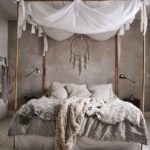Boho style in the interior
You can often hear the name boho clothing and interior style. What is this all about, where did this direction come from? Essentially, it is a cross between vintage elements, hippies, gypsies and God knows what else. It has become popular in fashion design and in creating an emotional atmosphere in a room. To embody the boho style in the interior, you need to have a certain taste and creative thinking. It combines truly bold ideas and is a kind of reflection of the inner world of its creator.
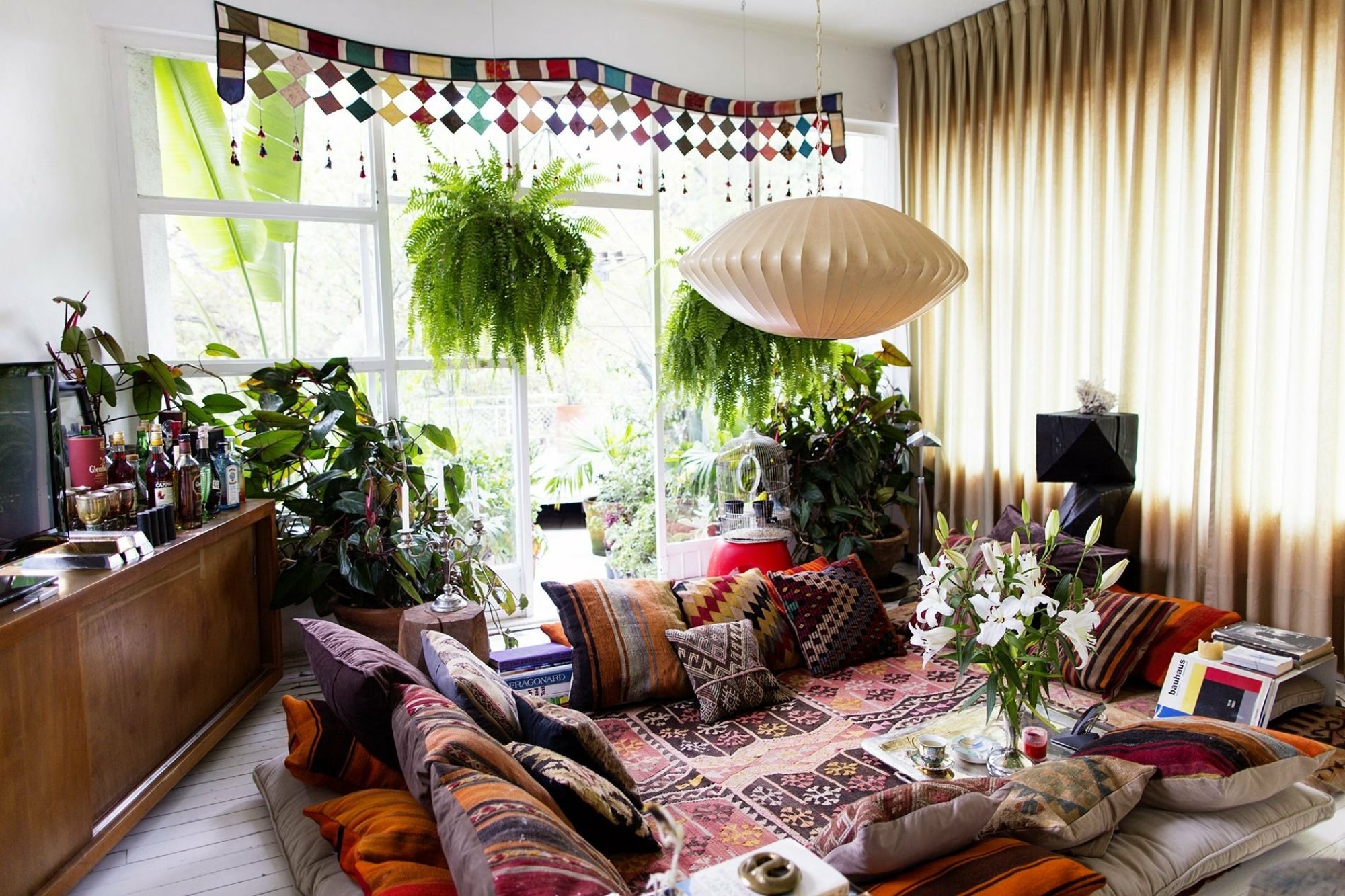
The content of the article
Style Basics
Boho interior not suitable for those who love minimalism. Rather, on the contrary, it is for those who prefer bright colors, a lot of unusual little things and exotic household items placed around the apartment. Once you start arranging your home, you can go to flea markets and markets in search of suitable items. Boho style does not adhere to any rules in choosing a color palette. You just have to be careful not to go overboard with the variety of colors and at least be able to combine colors a little. Usually choose:
- green, the color of spring lush grass;
- pink and scarlet;
- yellow, like a fragrant ripe lemon;
- blue-sky;
- lilac delicate, pastel color.
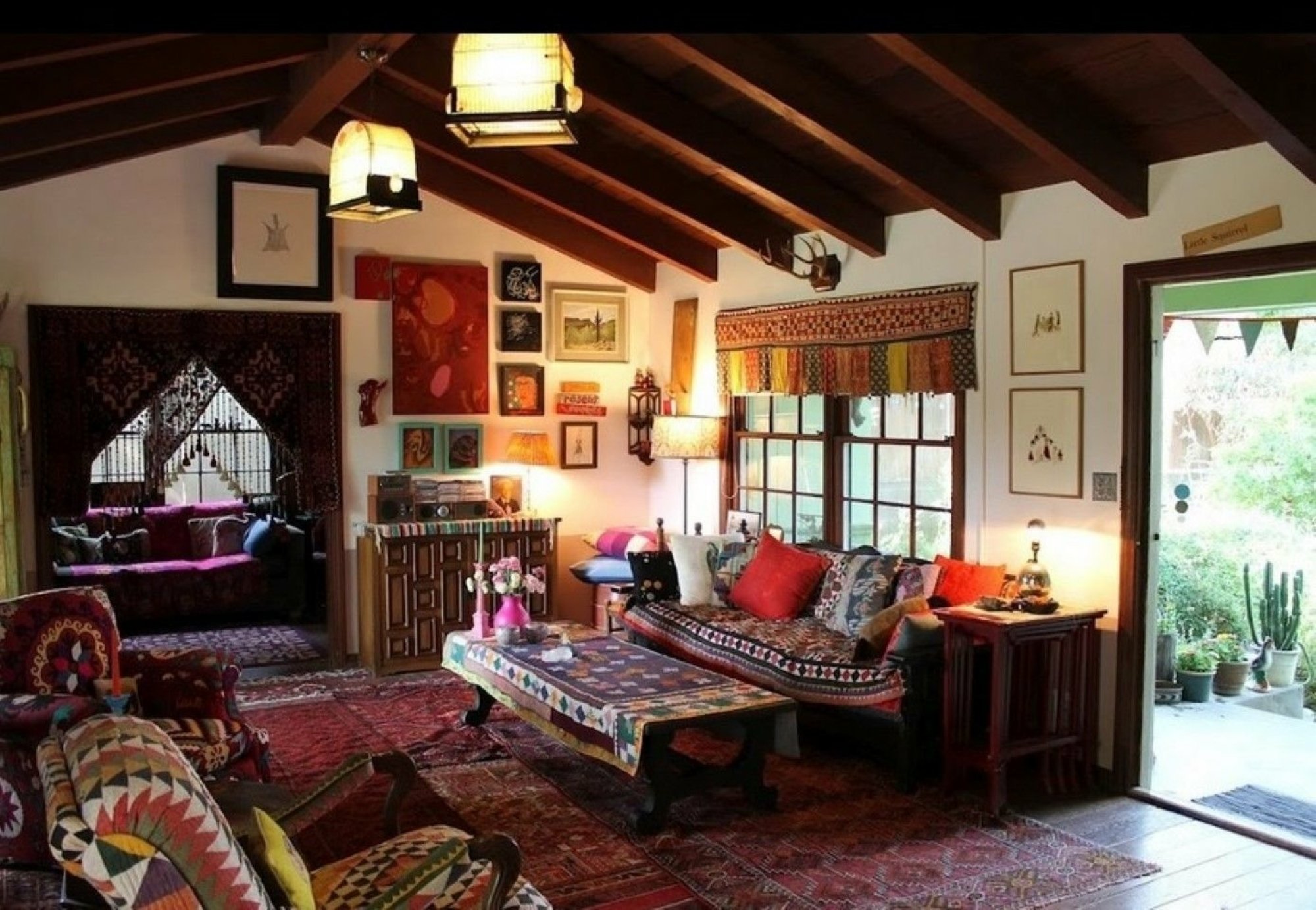
The result is a bright, cozy space among the urban greyness. And if, nevertheless, the created interior seems too bright, it is enough to remove a couple of elements and replace them with less flashy ones.
No matter what size the area is, tastefully furnished boho will look organic everywhere.
Style directions
Conventionally, several directions can be distinguished:
- classic - includes ethnic motifs, elements of nature, more restrained in colors;
- hippie - maximum lace, fringe and floral images;
- environmental - natural materials are used for finishing: paper, wood, stone, glass;
- luxurious - a parade of colors, unusual textures and decorative elements;
- glamorous - silk and rhinestones are used, and here you can combine antique furniture with modern accessories.

The room should have a lot of both natural light and warm artificial light. No white lights. Sources are located everywhere: an attractive floor lamp by the sofa, a cute lamp on the table, a charming night light near the bed. Let them all have fabric or paper lampshades, with many decorative elements.
Finishing
In general, finishing is the alpha and omega of any renovation. Let's go, as we were taught, from top to bottom - from the ceiling to the floor. Excellent materials for ceiling decoration:
- Plaster can be anything: textured or ordinary.
- Paint - selected after the basic color scheme of the room has been determined. Let it match one of the primary colors. It's better to take a matte one. There's more than enough glitz and glamor in the room.
- Stretch ceiling - ideally fabric and with large weaving.
You should not hide the ceiling beams and communications - this is another highlight of the stylistic design.
The walls are “dressed” in wallpaper with all kinds of patterns: it doesn’t matter whether the pattern is large or small, bright or barely noticeable. To decorate painted walls, choose stucco or painting. You can resort to using a stencil. If the choice fell on plaster, then why not make it with relief?
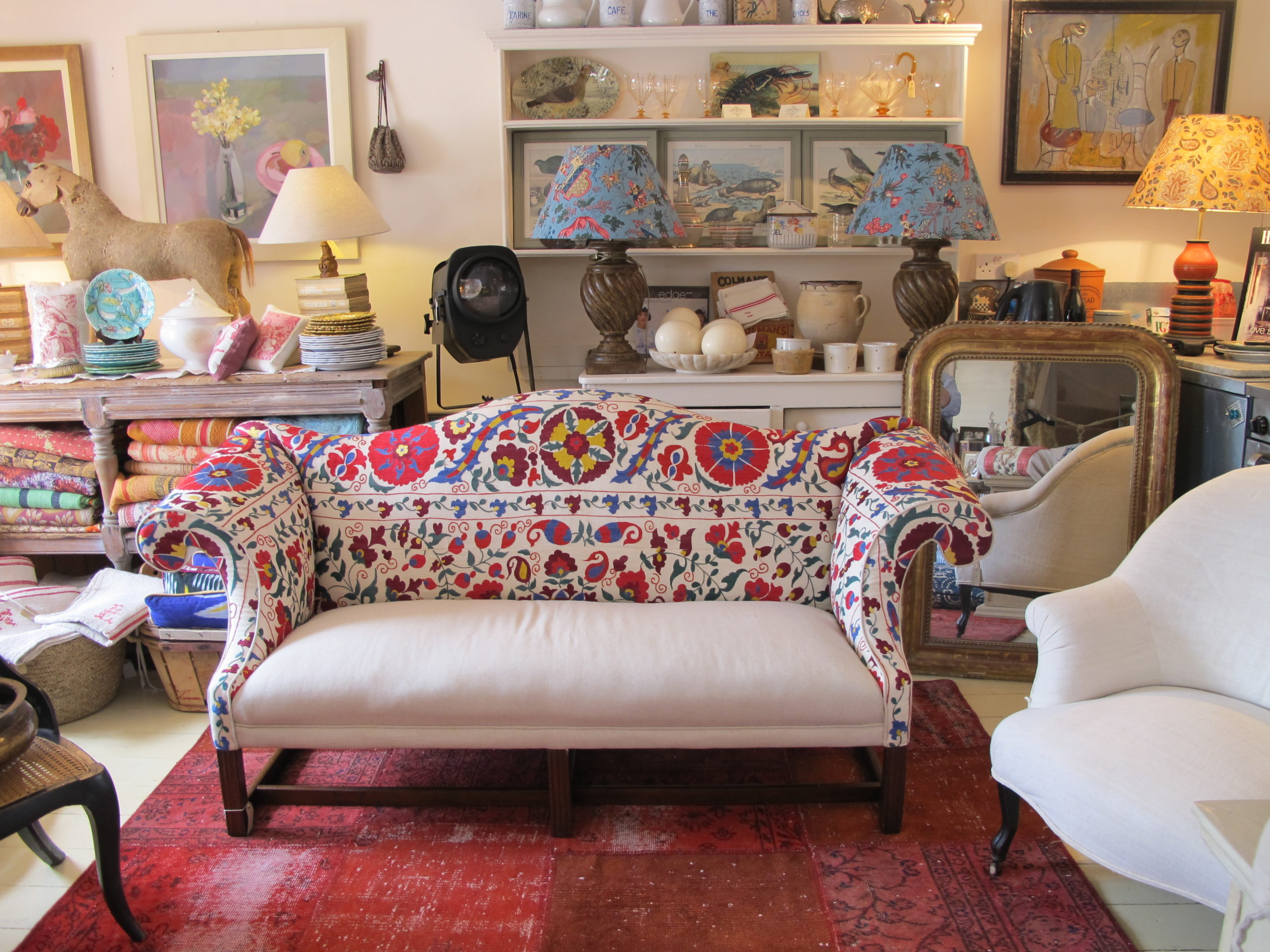
They lay it on the floor parquet, tile or laminate. You can also use mosaic patterns made of stone and wood. All this will be completely within the style.
Furnishings
Many decorative elements and textiles are the main components of this stylistic direction.
Furniture that has a shabby appearance, scuffs, cracks - any “imprint” of time is what you need. It’s not difficult to age interior items yourself, the main thing is to do it wisely, and not with a sledgehammer, and they will fit perfectly. The worn upholstery and darkened body only decorate the product - these are the little things that make the interior unique.
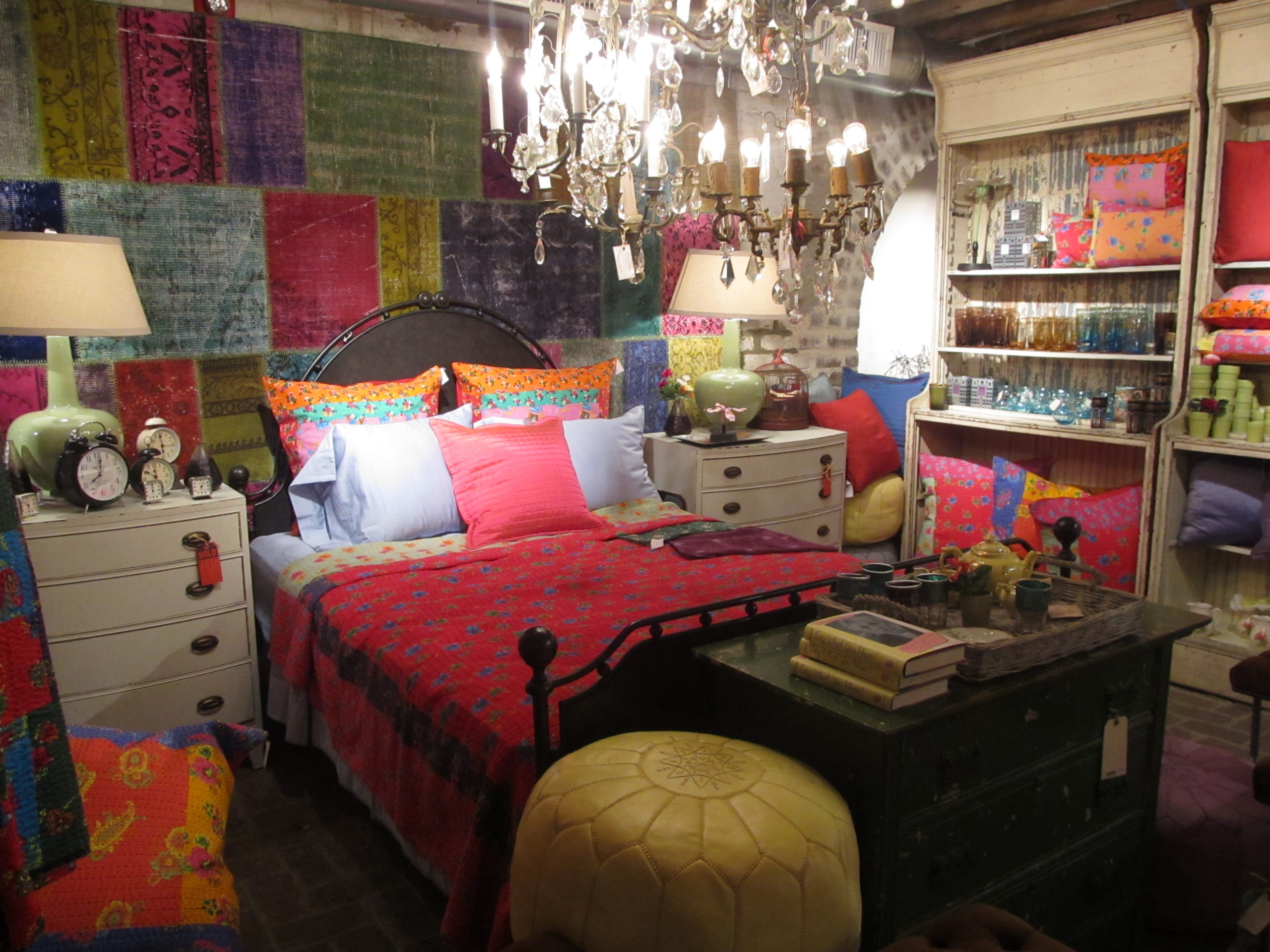
Of course, if you don’t have enough time to scrupulously search for each element (after all, selecting details can take years), it’s enough to place a few accents. Let these be large objects: a shabby chair, an antique-looking chest of drawers, a table battered by life (but not by a shashel, otherwise it will eat all the furniture).
Ottomans and sofas are a must. An abundance of upholstered furniture and textiles will add coziness to the room: all kinds of tablecloths, lace napkins, patchwork bedspreads, embroidered pillows, window curtains.
Decor
Everything is used: figurines, candles, mirrors in original frames, boxes, paintings, books, photos, antiques. Flowers in a painted vase are welcome. Not necessarily live, they will also work in dried or artificial form (just make sure there are an odd number of them). Indoor plants are placed in unusual flower pots. A globe or a world map on the wall will also be included here.
If there souvenirs, brought from distant countries, they can be safely used for decoration.
Boho looks different in every room. For example, the bedroom can be equipped with a lot of cute pillows and patchwork textiles.It is better to use muted colors to create a calmer atmosphere - there is no need to tire your eyes before bed.
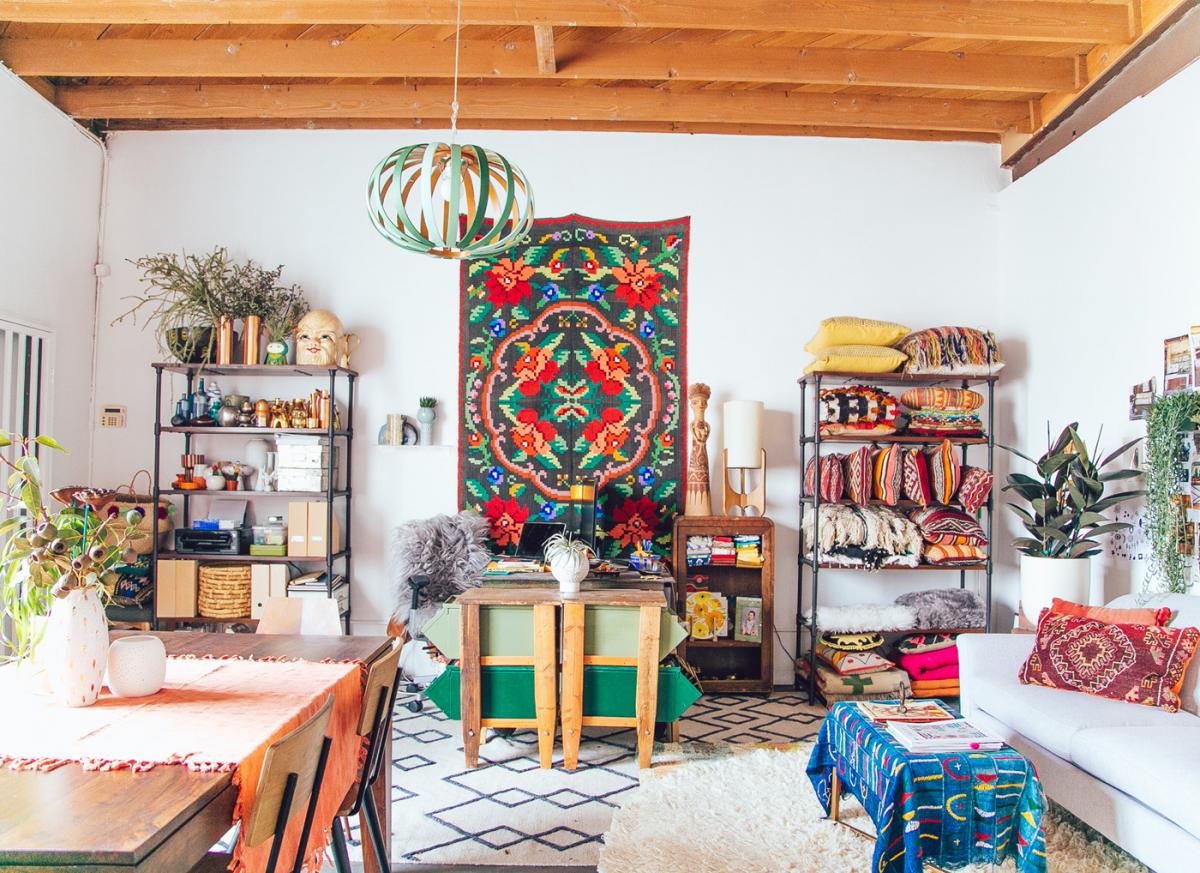
In the kitchen, it is quite appropriate to paint household appliances and cutlery. Every detail here can become a full-fledged decorative element.
But in the living room you can realize your wildest fantasies. The main thing is to leave enough space for passage between furniture.
Connoisseurs of the boho style in the interior argue that this is a great way to express your craving for luxury and wealth, without looking ridiculous. It is he who gives complete freedom of action and allows the owner’s personality to be revealed as much as possible.

